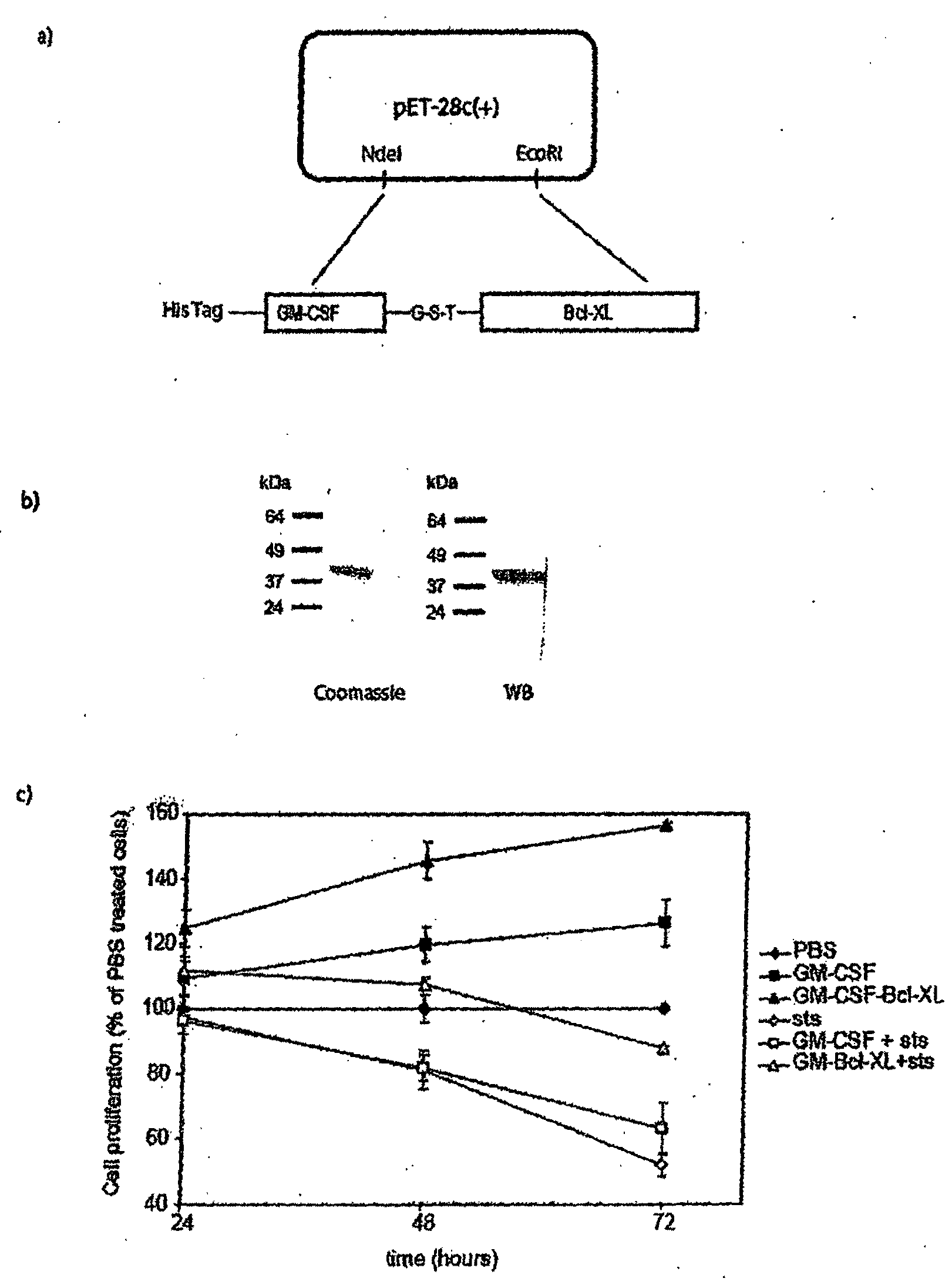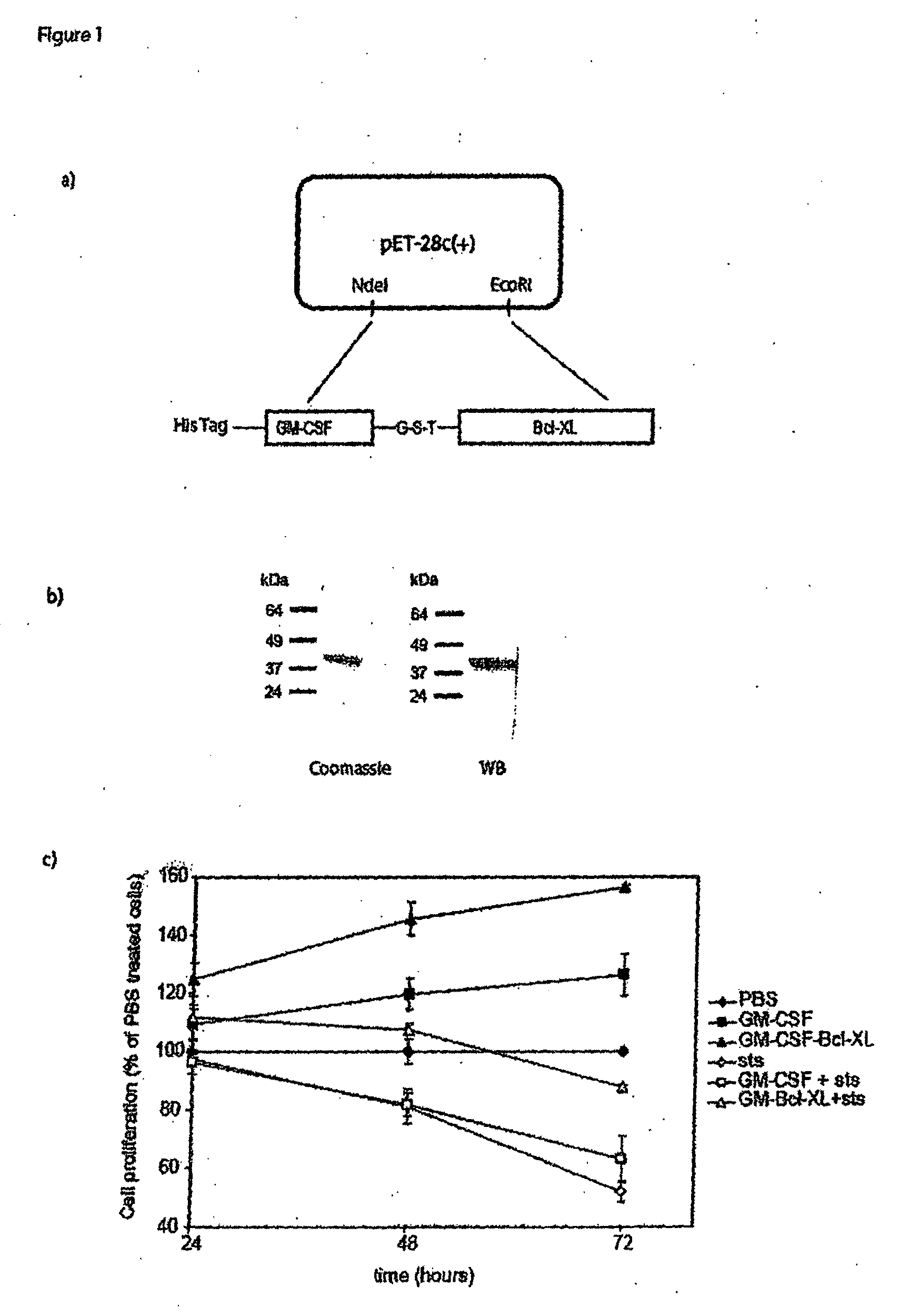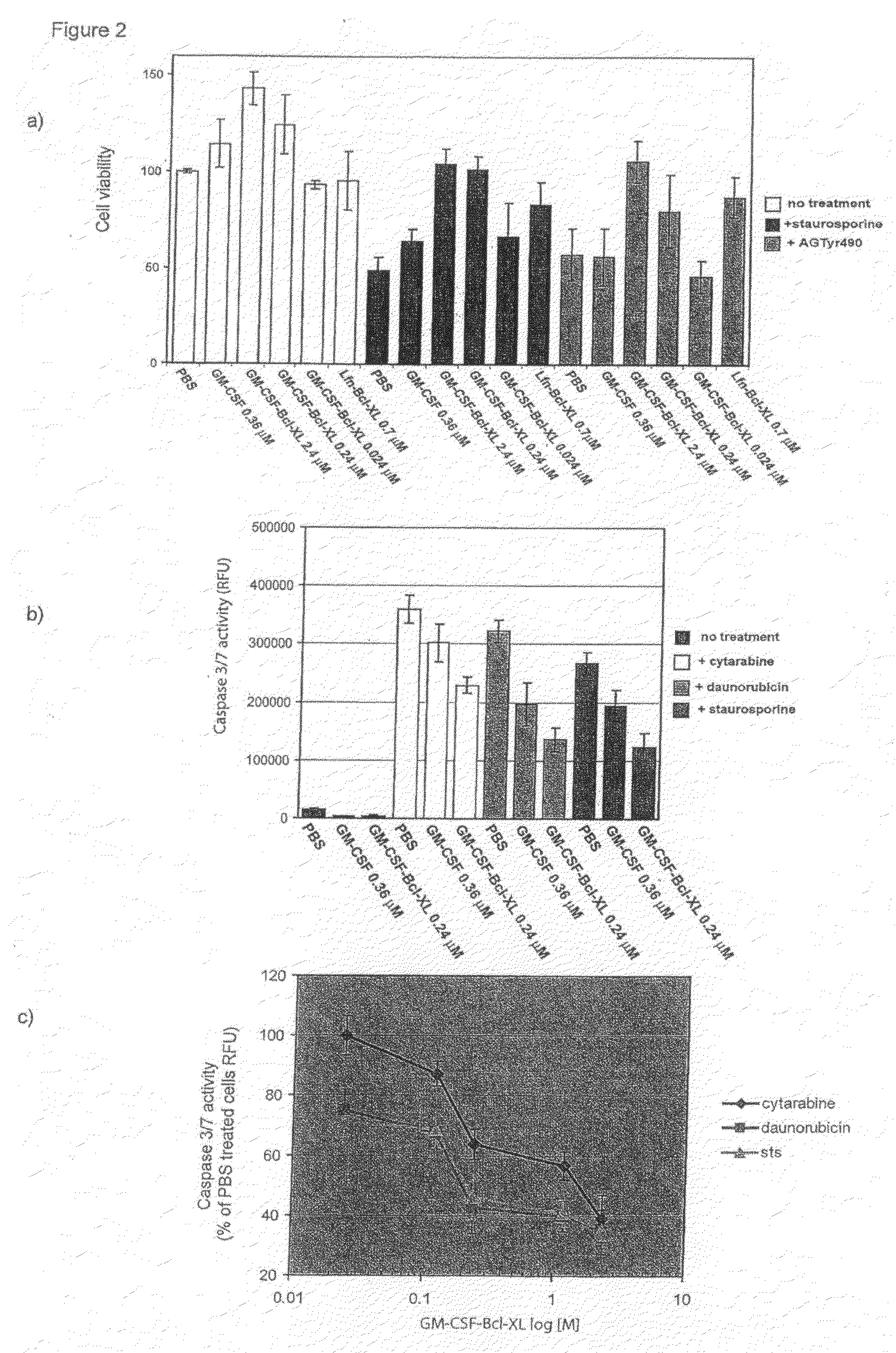Methods and Compositions for Inhibiting Cell Death or Enhacing Cell Proliferation
a cell proliferation and cell technology, applied in the direction of depsipeptides, peptide/protein ingredients, vector-based foreign material introduction, etc., can solve the problems of dose-limiting side effects, cell hyperproliferation, and limited therapeutic value by the extent to which they are toxic to normal cells, so as to enhance cell survival, inhibit cell death or inhibit cell proliferation
- Summary
- Abstract
- Description
- Claims
- Application Information
AI Technical Summary
Benefits of technology
Problems solved by technology
Method used
Image
Examples
example 1
GM-CSF Expression in E. coli
[0185]To deliver Bcl-XL into cells of the myeloid lineage, the cDNA for human Bcl-XL was fused to the C-terminus of the gene for human granulocyte-macrophage colony stimulating factor (GM-CSF). A histidine tag is present at the N-terminus of the chimeric protein and this construct was cloned into the expression plasmid pET28b(+) (FIG. 1A). FIG. 1A provides a schematic diagram illustrating the construction of the GM-CSF fusion protein. This construct was cloned into two different expression plasmids. The first plasmid, pET-28a(+) was used for expression in bacteria (E. coli). The second plasmid, pPICZA, was used for expression in the yeast Pichia pastoris. The protein expressed in E. coli was insoluble and found in inclusion bodies. The fusion protein was denatured and, after purification on a His-binding column, the protein was refolded by dilution in the presence of glutathione and arginine. After purification, the protein was ≧90% homogeneous and it ha...
example 2
GM-CSF-Bcl-XL Stimulates HL-60 Proliferation
[0186]The GM-CSF-Bcl-XL chimeric protein protected cells from apoptosis more effectively than GM-CSF alone. The effect of GM-CSF-Bcl-XL on the proliferation of a human myeloid cell line, HL-60 was also examined. The GM-CSF-Bcl-XL increased proliferation with the maximum effect observed at 48 hours. At that time the activity was 30% higher than that measured in cells treated with the same molar amount of the cytokine GM-CSF (FIG. 1C).
[0187]Staurosporine is a broad specificity inhibitor of various kinases that rapidly induces apoptosis. GM-CSF-Bcl-XL extended HL-60 cell survival in the presence of staurosporine from twenty-four hours to at least seventy-two hours. As shown in FIG. 1C, at forty-eight hours cultures treated with GM-CSF-BclXL and staurosporine contained approximately the same number of cells as control cultures without staurosporine. After seventy-two hours of incubation, 50% of control cells had undergone cell death, while onl...
example 3
GM-CSF-Bcl-XL Protected Cells from Tyr-Ag490-Induced Apoptosis
[0189]To assess the importance of the Bcl-XL portion of the fusion protein in the chimeric protein's prosurvival activity, the activity of the GM-CSF moiety was inhibited using the kinase inhibitors staurosporine and AgTyr490. Staurosporine was first described as an inhibitor of protein C kinase, but it has recently become clear that staurosporine is a broad specificity inhibitor of a diverse array of different kinases. High affinity binding of GM-CSF to its receptor induces activation of the receptor-associated Jak2 kinase by means of transphosphorylation of the kinase after oligomerization of the receptor subunits. Tyrphostin AG490 (AG490) specifically inhibits the activation of Jak2 blocking leukemic cell growth in vitro and in vivo (Meydan et al., (1996) Nature 379, 645-8; Quelle et al., (1994) Mol Cell Biol 14, 4335-41). Peripheral blood mononuclear cell (PBMC) were incubated with different concentrations of GM-CSF-B...
PUM
| Property | Measurement | Unit |
|---|---|---|
| Fraction | aaaaa | aaaaa |
| Cell death | aaaaa | aaaaa |
| Cell proliferation rate | aaaaa | aaaaa |
Abstract
Description
Claims
Application Information
 Login to View More
Login to View More - R&D
- Intellectual Property
- Life Sciences
- Materials
- Tech Scout
- Unparalleled Data Quality
- Higher Quality Content
- 60% Fewer Hallucinations
Browse by: Latest US Patents, China's latest patents, Technical Efficacy Thesaurus, Application Domain, Technology Topic, Popular Technical Reports.
© 2025 PatSnap. All rights reserved.Legal|Privacy policy|Modern Slavery Act Transparency Statement|Sitemap|About US| Contact US: help@patsnap.com



